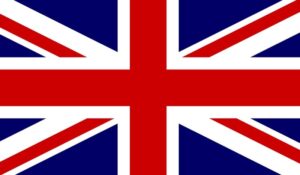 As the UK’s foremost producer of bespoke horse shavings we are very particular about the timber we choose to make our bedding products. Not only does it need to be of the highest quality it needs to be sustainable and it is always produced from well managed and monitored forest and woodland. We sit down with Matt Kelly our Timber buyer to discuss the background to the timber which is used for making Bedmax, Littlemax, and Stockmax.
As the UK’s foremost producer of bespoke horse shavings we are very particular about the timber we choose to make our bedding products. Not only does it need to be of the highest quality it needs to be sustainable and it is always produced from well managed and monitored forest and woodland. We sit down with Matt Kelly our Timber buyer to discuss the background to the timber which is used for making Bedmax, Littlemax, and Stockmax.
Where does the timber come from which is made into the shavings?
The pine and spruce timber we use in our production process comes from all over mainland UK. With three production plants in different locations, each factory has a different catchment area for sourcing, with only the occasional overlap. Greymare, our Northumberland based plant, sources mainly from the Scottish and English Border Country and southern and central Scotland.
Our Midlands plant near Newark mainly from the Midlands and Wales and on occasions, from the Southeast in Norfolk. Our Hampshire plant near Andover sources primarily central and southern England such as the New Forest, South Downs and Surrey.
Tell us where you source the timber from?
The vast majority of the timber we purchase comes from managed forests. Smaller volumes will come from small and medium sized landowners who have smaller parcels of woodland that don’t merit a forest plan. However, all commercial timber felled in the UK has a small level of management. A standard felling licence (which is required before any trees are felled) is, in itself, a small management plan. It will detail the size and type of woodland and species and what type of forestry operation is being undertaken.
It also must detail the replanting proposal. After any felling operation you are required legally to replant the same area or an equivalent area of the same size. It also goes a step further in that you also must ensure that the new planting is successful. If the landowner doesn’t ensure the success of the woodland, he will be required to replant woodland.
Are forests and woodland accredited?
Yes, some of the UK’s forests have FSC certified timber, or if they come under a large management company’s umbrella scheme they can be classed as controlled wood. This accreditation only becomes worthwhile for those forest owners with larger commercial forests, so smaller forest and woodland owners won’t have this. A small proportion of the timber we use to make our shavings comes from woodland with no formal accreditation.
Is this timber sustainable?
Yes, definitely, typically forests and woodland have a finite life-cycle and if they are appropriately managed, they are sustainable before being clear-felled when they reach their ‘commercial maturity’. In its lifecycle a plantation would usually have undergone one to two thinning cycles (to remove only 20-30% of the trees). The site is then replanted and the journey begins again. Depending on the species, soil type, location etc, this lifecycle can take between 50 to 60 years.
In harvesting trees are we caring for the environment?
We take conservation and care of the environment very seriously and we always request that timber supplied to us has, as a minimum, an approved felling licence. Ongoing regeneration is the lifeblood of any forest and woodland ecosystem and here in the UK, harvesting timber is an essential part of the cycle as it makes space for regrowth and develops robust, healthy, and diverse forest areas.
All woodland management plans or felling licences will take into account conservation and the managed woodlands will have wildlife and pollution control measures. The timber we purchase to make our Bedmax products is harvested in ways that support the natural processes like oxygen, water and carbon cycles and during the harvesting process great care is taken to sustain habitats for wildlife. I can speak from personal experience when I say that the birds and beasties really do come first. Over many many years of working within the industry I have seen windfarm projects delayed for months due to nesting birds and I have had my own harvesting sites delayed for nearly a year due to badgers.
The reality is you don’t even need an egg in a nest to stop a job, under the wildlife and environmental legislation, even nesting activity is protected. And last year here at Bedmax we saw significant impacts on our timber supply as a result of a number of felling operations being delayed due to nesting birds.
How is the timber harvested?
There are two main elements as part of the harvesting operation. The first unsurprisingly is the felling of the trees. This is done by a harvester, a purpose built machine that fells the tree, then strips the branches while also cutting it into the desired different lengths dependant on where the timber is going. As they strip the tree the driver will use the branches to build a ‘brash mat’., similar to a road it aids traction and protects the ground. He lays out the timber next to it in small piles for collection.

The second part is the extraction. This is done by a machine called a forwarder which, using the brash matt drives along behind the harvester and picks up the cut timber. It then takes out the timber transfer point or landing where it will be picked up by the HGVs for dispatch. For Bedmax we require a timber specification of 2.8m long and a diameter of 7cm to 45cm., he timber we purchase must meet this spec. These 2 machines come a variety of different sizes and types but all do the same job.
Is there specific timber which Bedmax looks for?
Yes, Bedmax uses predominately pine, this can be any kind of pine Scots pine and in the main we use Corsican pine, lodge pole. We also use some spruce for little max but also can use it for Bedmax. Andover uses the most spruce as pine can be in short supply in the southern areas of England with the larger forests being mostly Sitka and Norway spruce.
What happens to the woodland after it has been harvested?
Once all timber is gone the site may have the brash residues taken out and chipped leaving the site completely clear. This is often done to maximise returns and also makes the replanting easier however some landowners to leave it in situ. Normally a site will be required to be planted within 3 to 5 years. Prior to replanting a specialist team will come in and repair the drainage ditches and prep the ground. Then a fencing team will secure the site to avoid deer eating the young trees. Lastly the trees will be planted by a tree planting squad.




